 Facebook
Facebook
 X
X
 Instagram
Instagram
 TikTok
TikTok
 Youtube
Youtube
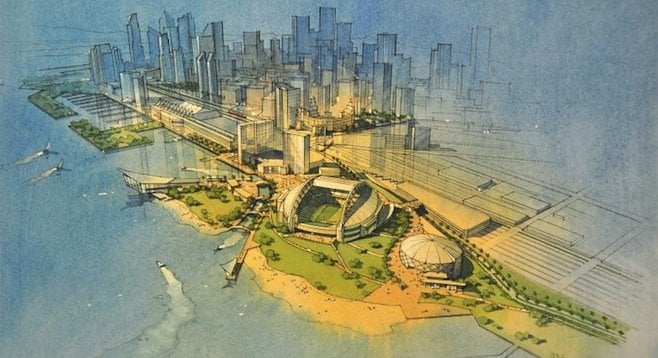
Chargers spokesman Mark Fabiani sent out an email this afternoon (February 23), stating that the Chargers are shooting for a combined stadium/convention center downtown. No surprise.
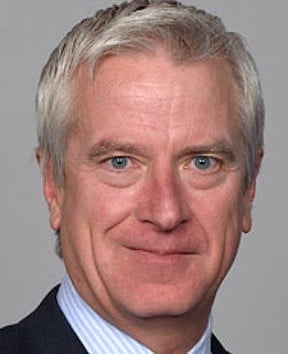
As the team was trying to get to Los Angeles — an effort that failed — Fabiani stated that a Mission Valley stadium, as pushed by a mayoral task force, would not do. After the team returned from its L.A. quest empty-handed, Chargers chairman Dean Spanos said he might consider Mission Valley, although he preferred downtown.
Fabiani's statement says that such a facility would "generate economic activity on hundreds of days per year" and would be a permanent home for Comic-Con.

I reached the ranking expert in convention centers, Heywood Sanders, a professor at the University of Texas San Antonio; and the top economist on subsidized stadiums, Roger Noll, a retired Stanford professor. Both said such a combined stadium/center would not work.
"A world-class convention center has almost no relationship to a football stadium," says Noll. "This is like log-rolling in politics. It's a large-scale program with almost everybody getting something."
Fabiani's claim that such a facility will add to the economy is silly, says Noll. Mendicants seeking taxpayer money for stadiums always say that, but it doesn't happen, except in cases when the city gives away a lot of land to the developer, such as what happened with the Padres stadium downtown.
(Former Padres owner John Moores raked in $700 million to $1 billion after he got ballpark land for early-1990s prices; that was in addition to the $300 million ballpark subsidy.)
The proposed Chargers project "will add very little to financial performance," says Noll. "Anything that increases seating capacity above 25,000 is only useful for sports, not anything else."
Sanders points out that the dome in which the St. Louis Rams played doubled as a convention center. But with the Rams going to Los Angeles, the domed stadium will probably be demolished because it wouldn't work as a stand-alone center. St. Louis is considering a new center, despite the national glut of convention-center space that has led to centers slashing prices by 50 percent.
Like Noll, Sanders believes the claim that a center will be combined with a stadium is strictly political.
"It is more a political ploy than a substantive effort to bolster the city's convention business," says Sanders. San Diegans "may not be thrilled about donating public dollars to a team that wanted to spurn them. The convention center piece makes it look more salable to the public. They say it will bring conventions and will be a savior to Comic-Con. It's not clear it will save Comic-Con" because the large, western coastal centers are in the process of expanding and could woo Comic-Con.
Sanders says that convention-center space is "not particularly useful" on the floor of a large stadium — "There is not much convention space."
Also, if the combined stadium/convention center would be several blocks from the current center, it would not work. Conventioneers don't even like to cross the street to an expanded center.
Fabiani says the Chargers see the Mission Valley locale being used for educational purposes — say, by San Diego State or the University of California San Diego; that idea is not new, either.
Fabiani statement
STATEMENT ON BEHALF OF THE SAN DIEGO CHARGERS
February 23, 2016
We have spent the last month evaluating the leading San Diego stadium sites and financing proposals. During that time, led by Chargers Special Advisor Fred Maas, we have engaged in regular discussions with Mayor Faulconer, Supervisor Roberts, City Attorney Goldsmith, and City and County negotiators. And we have carefully evaluated the arguments made by the Mayor and others regarding the merits of the Mission Valley site. We agree that, in many respects, the arguments for Mission Valley are compelling.
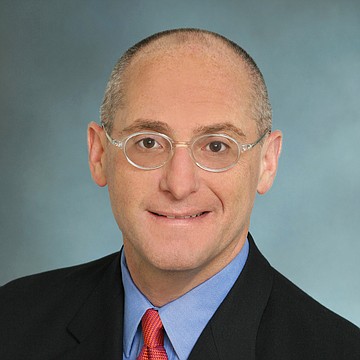
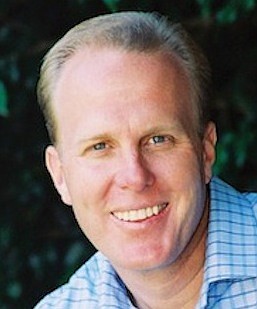
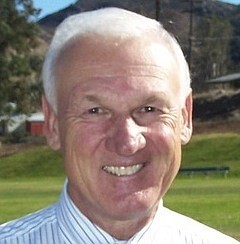
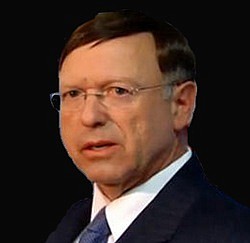
At the same time, we have considered the potential benefits to both the greater San Diego region and the Chargers of a multi-use stadium/convention center facility downtown. The multi-use facility, when combined with Petco Park, the existing Convention Center, the Gaslamp Quarter, and a revitalized East Village, would create an unparalleled entertainment and sports district that will host Super Bowls and will ideally be a permanent home for Comic-Con and a Comic-Con museum. All of our research demonstrates that voters are more likely to approve a multi-use facility that would generate economic activity on hundreds of days per year, including by attracting major sporting and convention events that San Diego cannot now host. The downtown multi-use facility would also free up the existing Mission Valley site for potential use by educational institutions such as San Diego State and UCSD, as well as for a large riverfront park.
For these reasons, the Chargers will begin collaborating immediately with the existing diverse citizens’ coalition led by Donna Frye and JMI Realty that has already been formed in favor of a downtown convention center expansion and educational and recreational uses in Mission Valley. Our goal is to win voter approval in November 2016 for a downtown multi-use stadium/convention center facility and to facilitate the best possible community uses for the existing Mission Valley site. We will deliver regular reports to our fans and to the community about the progress we are making.
We believe that a downtown multi-use facility will attract broad support from throughout our entire community. And we hope that, as our downtown proposal is developed and as the campaign for passage begins, those who have supported the Mission Valley site will keep an open mind and consider supporting what we believe is the best way to secure a permanent home for the Chargers in San Diego.
We are very grateful for all of the hard work that Mayor Faulconer, Supervisor Roberts and City Attorney Goldsmith have done on behalf of the City and County over the past few weeks and look forward to maintaining a dialogue as our plans move forward.


Chargers spokesman Mark Fabiani sent out an email this afternoon (February 23), stating that the Chargers are shooting for a combined stadium/convention center downtown. No surprise.

As the team was trying to get to Los Angeles — an effort that failed — Fabiani stated that a Mission Valley stadium, as pushed by a mayoral task force, would not do. After the team returned from its L.A. quest empty-handed, Chargers chairman Dean Spanos said he might consider Mission Valley, although he preferred downtown.
Fabiani's statement says that such a facility would "generate economic activity on hundreds of days per year" and would be a permanent home for Comic-Con.

I reached the ranking expert in convention centers, Heywood Sanders, a professor at the University of Texas San Antonio; and the top economist on subsidized stadiums, Roger Noll, a retired Stanford professor. Both said such a combined stadium/center would not work.
"A world-class convention center has almost no relationship to a football stadium," says Noll. "This is like log-rolling in politics. It's a large-scale program with almost everybody getting something."
Fabiani's claim that such a facility will add to the economy is silly, says Noll. Mendicants seeking taxpayer money for stadiums always say that, but it doesn't happen, except in cases when the city gives away a lot of land to the developer, such as what happened with the Padres stadium downtown.
(Former Padres owner John Moores raked in $700 million to $1 billion after he got ballpark land for early-1990s prices; that was in addition to the $300 million ballpark subsidy.)
The proposed Chargers project "will add very little to financial performance," says Noll. "Anything that increases seating capacity above 25,000 is only useful for sports, not anything else."
Sanders points out that the dome in which the St. Louis Rams played doubled as a convention center. But with the Rams going to Los Angeles, the domed stadium will probably be demolished because it wouldn't work as a stand-alone center. St. Louis is considering a new center, despite the national glut of convention-center space that has led to centers slashing prices by 50 percent.
Like Noll, Sanders believes the claim that a center will be combined with a stadium is strictly political.
"It is more a political ploy than a substantive effort to bolster the city's convention business," says Sanders. San Diegans "may not be thrilled about donating public dollars to a team that wanted to spurn them. The convention center piece makes it look more salable to the public. They say it will bring conventions and will be a savior to Comic-Con. It's not clear it will save Comic-Con" because the large, western coastal centers are in the process of expanding and could woo Comic-Con.
Sanders says that convention-center space is "not particularly useful" on the floor of a large stadium — "There is not much convention space."
Also, if the combined stadium/convention center would be several blocks from the current center, it would not work. Conventioneers don't even like to cross the street to an expanded center.
Fabiani says the Chargers see the Mission Valley locale being used for educational purposes — say, by San Diego State or the University of California San Diego; that idea is not new, either.
Fabiani statement
STATEMENT ON BEHALF OF THE SAN DIEGO CHARGERS
February 23, 2016
We have spent the last month evaluating the leading San Diego stadium sites and financing proposals. During that time, led by Chargers Special Advisor Fred Maas, we have engaged in regular discussions with Mayor Faulconer, Supervisor Roberts, City Attorney Goldsmith, and City and County negotiators. And we have carefully evaluated the arguments made by the Mayor and others regarding the merits of the Mission Valley site. We agree that, in many respects, the arguments for Mission Valley are compelling.




At the same time, we have considered the potential benefits to both the greater San Diego region and the Chargers of a multi-use stadium/convention center facility downtown. The multi-use facility, when combined with Petco Park, the existing Convention Center, the Gaslamp Quarter, and a revitalized East Village, would create an unparalleled entertainment and sports district that will host Super Bowls and will ideally be a permanent home for Comic-Con and a Comic-Con museum. All of our research demonstrates that voters are more likely to approve a multi-use facility that would generate economic activity on hundreds of days per year, including by attracting major sporting and convention events that San Diego cannot now host. The downtown multi-use facility would also free up the existing Mission Valley site for potential use by educational institutions such as San Diego State and UCSD, as well as for a large riverfront park.
For these reasons, the Chargers will begin collaborating immediately with the existing diverse citizens’ coalition led by Donna Frye and JMI Realty that has already been formed in favor of a downtown convention center expansion and educational and recreational uses in Mission Valley. Our goal is to win voter approval in November 2016 for a downtown multi-use stadium/convention center facility and to facilitate the best possible community uses for the existing Mission Valley site. We will deliver regular reports to our fans and to the community about the progress we are making.
We believe that a downtown multi-use facility will attract broad support from throughout our entire community. And we hope that, as our downtown proposal is developed and as the campaign for passage begins, those who have supported the Mission Valley site will keep an open mind and consider supporting what we believe is the best way to secure a permanent home for the Chargers in San Diego.
CommentsWe are very grateful for all of the hard work that Mayor Faulconer, Supervisor Roberts and City Attorney Goldsmith have done on behalf of the City and County over the past few weeks and look forward to maintaining a dialogue as our plans move forward.